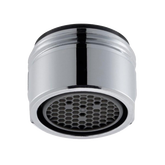. 5,000 people a day die because of dirty drinking water. home (2009)
. 1 billion people have no access to safe drinking water. home (2009)
Although potable water may be scarce, very little is being done to preserve the precious resource. Human activity is now exerting more pressure on both the quantity of water by means of its extraction, and its quality through pollution.
In addition, the disturbance of the water cycle -through deforestation, dams, irrigation, and drainage canals- is impeding the water replenishment process. For example, soil erosion (soil acts as a sponge) and the loss of plant cover (plants intercept rainfall) diminish the recovery of groundwater reserves. Continued soil erosion and loss of plant cover (including forests), will lead to scarcer water resources and poorer water quality.
Water quality will not improve until the practice of disposing untreated wastewaters on land and into streams and rivers stops.
Today, a huge amount of energy is used to deliver water to consumers through long distance pipes.
In addition, the disturbance of the water cycle -through deforestation, dams, irrigation, and drainage canals- is impeding the water replenishment process. For example, soil erosion (soil acts as a sponge) and the loss of plant cover (plants intercept rainfall) diminish the recovery of groundwater reserves. Continued soil erosion and loss of plant cover (including forests), will lead to scarcer water resources and poorer water quality.
Water quality will not improve until the practice of disposing untreated wastewaters on land and into streams and rivers stops.
Today, a huge amount of energy is used to deliver water to consumers through long distance pipes.
The LIFEHAUS project promotes water preservation through the collection of rainwater and its use threefold, allowing its occupant to live in complete self-sufficiency. In addition, the final use of recycled water for irrigation helps the water filtering process through soil and its return to the groundwater, thus reinforcing its natural order.
|
In low precipitation areas, the LIFEHAUS would naturally require a greater surface area of land for sufficient rainwater collection.
Under such extreme conditions, most prominently found in Lebanon’s eastern Qalamoun region and the northeastern border town of Arsaal, the average annual precipitation can barely hit the 200mm mark. Surface area needed for rainwater collection for a family of 5 is : - Eastern Lebanon: 630m2 - Neighboring mountain areas: 126m2 - Western mountain range: 63m2 |
Domestic Water Management :
Through the use of eco-friendly technologies, the LIFEHAUS is capable of managing its water resources through:
|
The average water consumption of a person is estimated to lie between 160L and 200L per day. This would fall to 70 L per person in the LIFEHAUS.
|
|
|
|
|
By respecting all these recommendations, the domestic water consumption of a LIFEHAUS is 3 times less in comparison to conventional homes.
Many other techniques and tips that could highly help in cutting down the consumption of water, will be advised once the building is constructed in accordance to its size and number of occupants.
The LIFEHAUS avoids:
The fact that all this can be accomplished through simple designs that you can build yourself makes the LIFEHAUS’ water self-sufficiency affordable to anyone who dreams of living OFF-THE-GRID.
Many other techniques and tips that could highly help in cutting down the consumption of water, will be advised once the building is constructed in accordance to its size and number of occupants.
The LIFEHAUS avoids:
- Seawater intrusion in coastal areas.
- Contamination of rivers and coastal waters due to the mismanagement of black water drainage.
- Contamination of rivers and groundwater from leachate seepage. All organic waste is composted and reused to feed the garden.
- Contamination of groundwater from pesticides and nitrates.
The fact that all this can be accomplished through simple designs that you can build yourself makes the LIFEHAUS’ water self-sufficiency affordable to anyone who dreams of living OFF-THE-GRID.
© COPYRIGHT 2022 ALL RIGHTS RESERVED.






